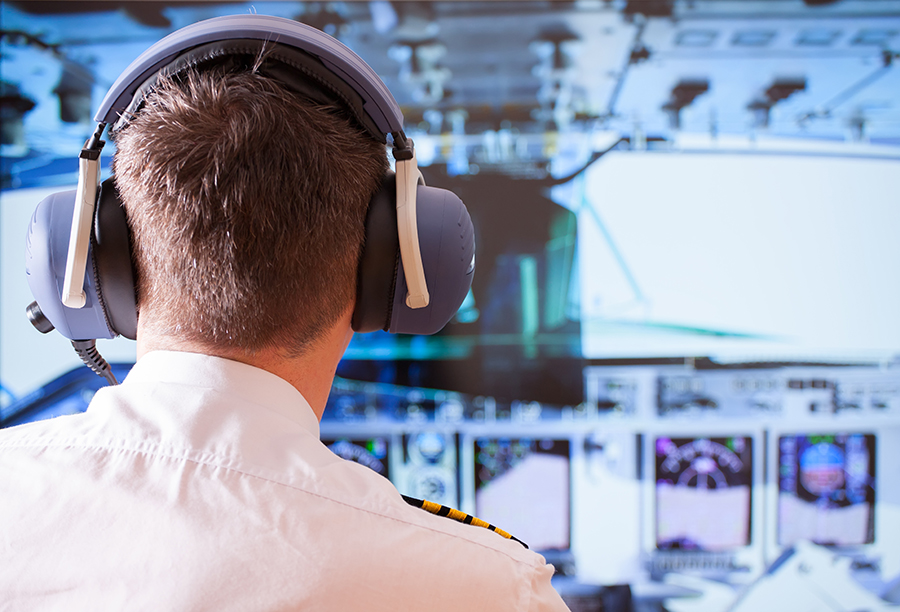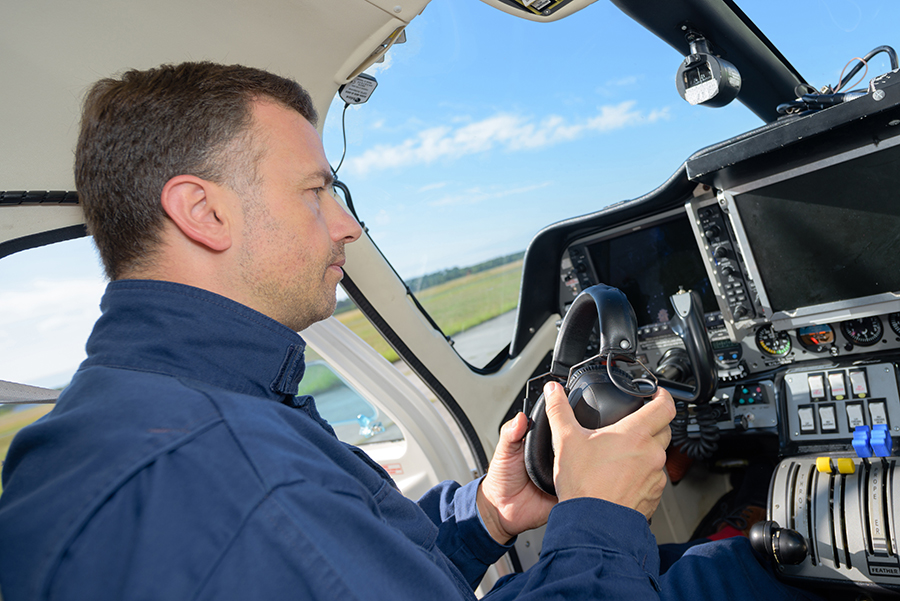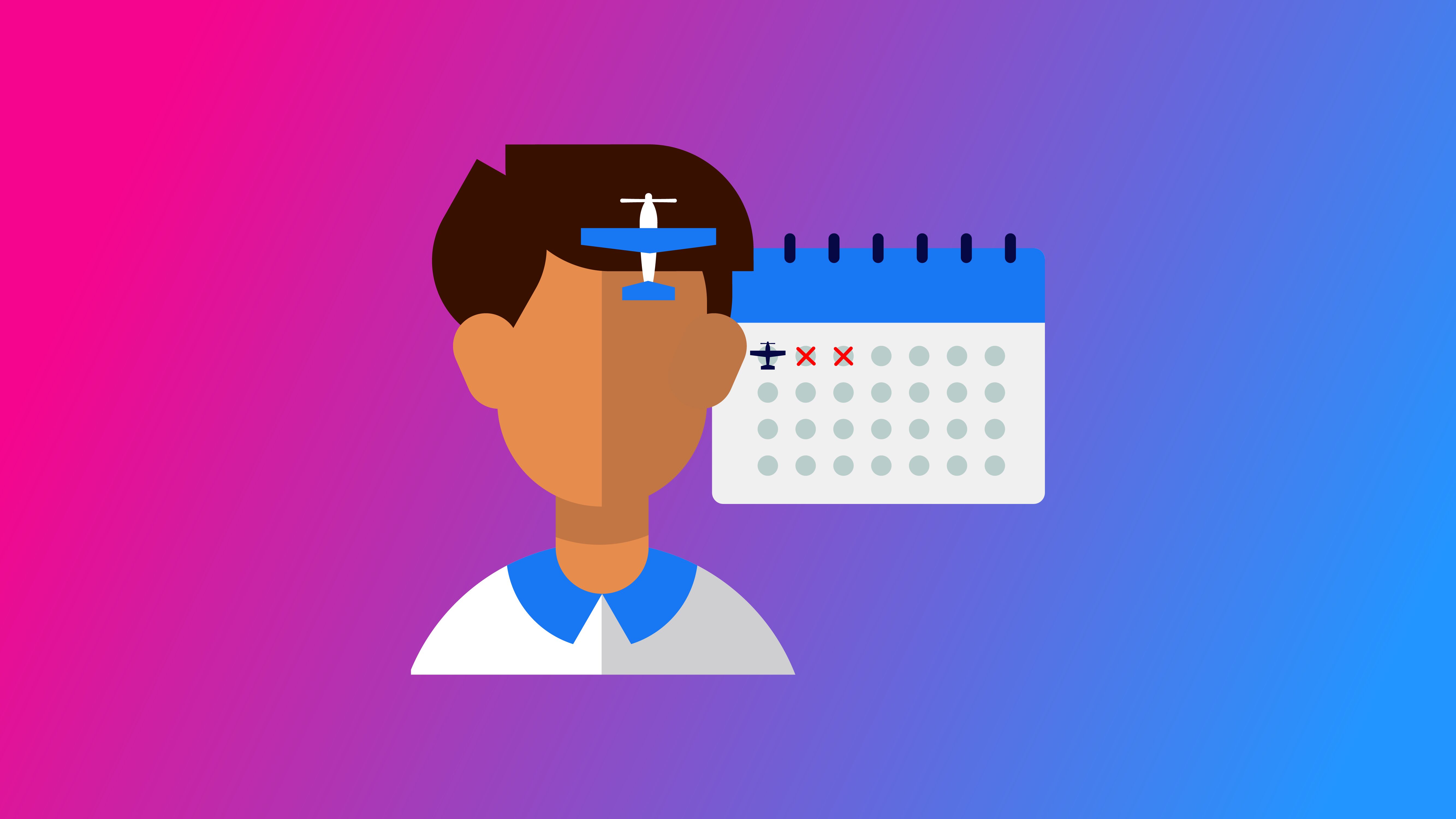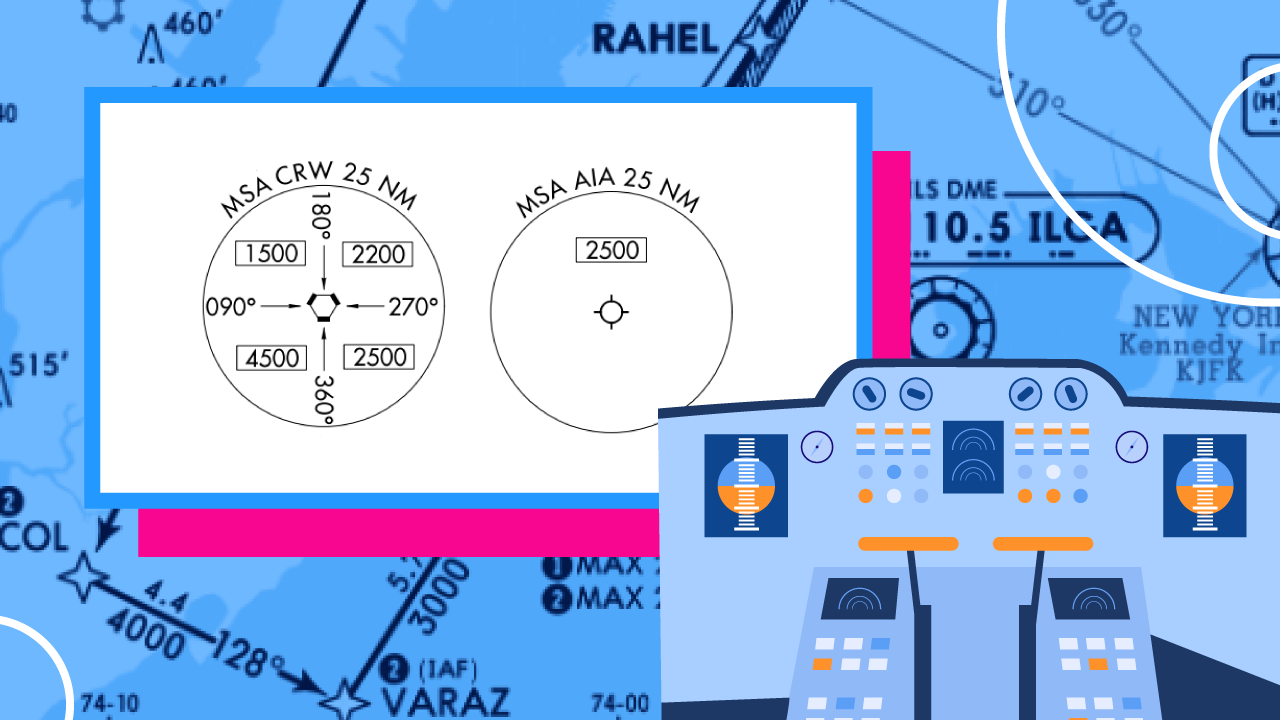-
The FAA Hearing Test
- The Conversational Voice Test
- The Pure Tone Audiometric Test
- Audiometric Speech Discrimination Test
-
What If You Don't Pass Any of the FAA Hearing Tests?
-
What is a Statement of Demonstrated Ability (SODA)?
-
How Can You Obtain a Statement of Demonstrated Ability (SODA)?
-
The SODA Medical Flight Test
-
Can Commercial Pilots Wear Hearing Aids?
-
Aviation Headsets and Hearing Aids
-
Conclusion
Though many people wear hearing aids, there is a common misconception that they cannot fly if they do. This is not the case. If you wear hearing aids, you can become a pilot as long as you are able to pass the FAA hearing test while wearing them. The same applies to cochlear implants.
In some cases, pilots may only use their hearing aids while on the ground, depending on how well their hearing aids function with headsets and airplane equipment.
The FAA Hearing Test
All pilots must pass a hearing test in order to obtain their license. The hearing test forms part of the medical examination required to obtain the medical certificate.
If a pilot is wearing hearing aids during the test, they are required to use them as stipulated on their medical certificate.
The FAA hearing test will include the following:
The Conversational Voice Test
For the conversational voice test, you will be asked to stand 6 feet away from, and with your back towards, the Medical Examiner and demonstrate that you can hear an average conversational voice in a quiet room using both ears.
The Pure Tone Audiometric Test
If you fail the conversational voice test, the Medical Examiner will administer the pure tone audiometric test. You will not be allowed to wear your hearing aids for this test.
A pure tone audiometric test is a hearing test using an audiometer that sends sounds into your ear and vibrations through your bone. It measures the frequencies at which you are able to hear more than half of the sounds. The pure tone audiometric test is able to detect defects in the following:
- Air conduction (conductive hearing loss)
- Bone conduction (sensorineural hearing loss)
Here are the minimum acceptable thresholds for the pure tone audiometric test:
| Frequency (Hz) | 500 Hz | 1000 Hz | 2000 Hz | 3000 Hz |
| Better Ear (Db) | 35 | 30 | 30 | 40 |
| Poorer Ear (Db) | 35 | 50 | 50 | 60 |
You can pass either the Conversational Voice or Pure Tone Audiometric test, and you can take either one first if you wish.
Audiometric Speech Discrimination Test
If you fail the audiometric and conversational voice test, an audiometric speech discrimination test will be administered.
The audiometric speech discrimination test is a hearing test that determines your ability to hear and understand speech by measuring the number of words you can repeat when heard through earphones at different decibel levels. The audiometric speech discrimination test helps differentiate between conductive and sensorineural hearing loss.
You will need to obtain at least 70 percent in one ear at an intensity of less than 65 decibels in order to pass the audiometric speech discrimination test.
What If You Don’t Pass Any of the FAA Hearing Tests?
If you don’t pass any of the FAA hearing tests, you may still be eligible for a Statement of Demonstrated Ability (SODA).
What is a Statement of Demonstrated Ability (SODA)?

A Statement of Demonstrated Ability (SODA) is issued by the FAA’s Aerospace Medicine Certification Division (AMCD). It allows a pilot to obtain a medical certificate (with restrictions determined by the Aerospace Medicine Certification Division) even if they are unable to pass the standard FAA hearing exams.
If an applicant fails all of the FAA Hearing Tests, they likely have some sort of hearing loss that will prevent them from flying with no restrictions. If you obtain a Statement of Demonstrated Ability, you will probably not be allowed to fly inside airspace that requires the use of radios.
It is possible, however, to obtain a Statement of Demonstrated Ability that will allow you to enter airspace that requires the use of radios.
As a student pilot, you will likely obtain a restriction on your student pilot certificate (e.g., prohibiting flight in airspace where radio communication is required). When you’re ready for your check ride, you will send a request to the Aerospace Medicine Certification Division that an FAA inspector conducts a Medical Flight Test during the same time period.
How Can You Obtain a Statement of Demonstrated Ability (SODA)?
You must request to apply for a Statement of Demonstrated Ability (SODA) from the Aerospace Medicine Certification Division of the FAA.
To qualify for a Statement of Demonstrated Ability, you must undergo either:
- A special examination by an Ear, Nose, and Throat (ENT) specialist,
- A Medical Flight Test, or
- Demonstrate previous operational experience.
The SODA Medical Flight Test
The Medical Flight Test for a SODA is a flight undertaken with an examiner to determine the extent of your medical limitation.
The Medical Flight Test assesses a pilot’s ability to hear critical auditory cues in the cockpit by having an examiner fly with the pilot.
These auditory cues can include engine power and performance changes, impending stalls, visual indicators, and warning lights that all serve to notify the pilot of any potential danger or mechanical issues.
If you experience hearing loss as well as other symptoms, such as vertigo, you may need further evaluation before being approved by the FAA’s Aerospace Medicine Certification Division.
Can Commercial Pilots Wear Hearing Aids?
You can become a Commercial Pilot and wear hearing aids if you are able to pass the FAA hearing test and obtain the required medical certificate.
Aviation Headsets and Hearing Aids

When it comes to aviation headsets and hearing aids, it’s best to remove your hearing aid before flying.
The main goal of an aviation headset is to reduce sound, while a hearing aid’s main purpose is to amplify it. Wearing a hearing aid with an aviation headset is like drinking sleeping pills with a cup of coffee.
Another thing to consider is the physical interference hearing aids might cause when wearing an aviation headset. A large, behind-the-ear hearing aid might be too big to fit inside the earcup of smaller headsets. In contrast, hearing aids called Completely in Canal (CIC) don’t stick out of the ear and may be better suited to aviation headsets. However, CIC hearing aids may not work with on-ear headsets (like the David Clark Pro-X).
It’s best to test out your hearing aid with multiple brands and models of aviation headsets to ensure the best possible fit before purchasing.
Another problem you may encounter is using your hearing aid in conjunction with headsets that feature Active Noise Reduction (ANR). The advanced electronics of an ANR headset may interfere with the complex electronics of hearing aids. Issues sometimes occur when the hearing aid is turned up very high or incorrectly positioned inside the ear. A common issue you might get is a squealing feedback loop that makes the headset unusable. Older ANR headsets usually have more problems with this than newer models.
There are more pros than cons to wearing an ANR headset, so don’t give up until you find a model that fits your needs. Fortunately, many modern ANR headsets can be used with hearing aids.
Make sure you purchase a headset with a 30-day return policy that will allow you to test the headset for compatibility with your hearing aid.
Before flying, if you’re hesitant about whether or not to keep your hearing aids in, it is best practice to remove them and use the headset controls. By adjusting the volume, you should be able to hear clearly. Wearing hearing aids while flying is not recommended unless you absolutely need them; having one less thing that could go wrong in the cockpit is always preferable.
Do your research on different models from a reliable dealer with a return policy that works for you. You may also want to bring your headset to your audiologist to see if they can tune your hearing aids to be compatible with your preferred headset.
Conclusion
Hearing loss is a common problem, but it doesn’t have to prevent you from becoming a pilot. If you’re able to pass the FAA medical hearing test and obtain a medical certificate, you can wear hearing aids while flying. However, it’s best to remove your hearing aids before flying and just use an aviation headset instead. Make sure you do your research on different models of aviation headsets and be sure to try them out with your hearing aids before making a purchase.
If you have any questions about whether or not you can fly with hearing aids, it’s best to consult with an Aviation Medical Examiner (AME). An AME can help you determine if you’re eligible for an FAA medical certificate.
To find an AME near you, visit this link: https://www.faa.gov/pilots/amelocator



